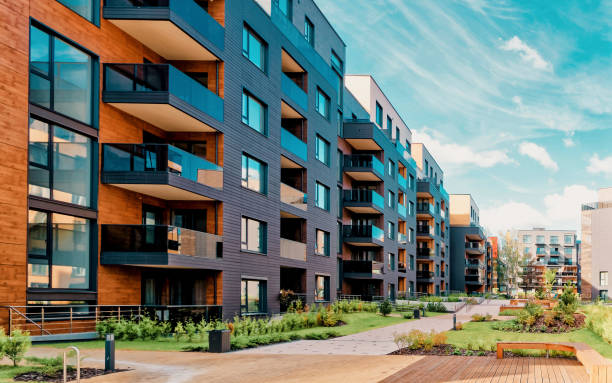The Dark Retail Real Estate Space Challenge
The rise of e-commerce has transformed the landscape of retail, creating a new phenomenon known as dark retail space. These vacant stores, once bustling with activity, now stand silent and empty. While this shift poses challenges for landlords in the realm of retail real estate, it also opens doors to innovative solutions. The impact on traditional brick-and-mortar stores cannot be understated; many are grappling with how to adapt or survive in this ever-evolving market.
In the vibrant Florida commercial real estate sector, dark retail spaces present unique opportunities and hurdles alike. Understanding how to navigate this complex environment is crucial for both property owners and potential tenants. Let’s explore the dynamics behind dark retail spaces and uncover strategies that can breathe life back into these forgotten storefronts.
The Impact of E-Commerce on Traditional Retail Stores
E-commerce has reshaped the retail landscape dramatically. Traditional stores once thrived on foot traffic and in-person shopping experiences. Now, many face significant challenges.
Shoppers increasingly prefer the convenience of online purchases. They can browse products from home and enjoy doorstep delivery without the hassle of parking or long lines. This shift in consumer behavior pressures brick-and-mortar locations.
Moreover, competition is fierce. Large e-commerce giants often offer lower prices due to their streamlined operations and vast inventory. Local retailers struggle to keep pace, creating a sense of urgency for adaptation or risk obsolescence.
Many traditional retailers are seeking ways to integrate digital strategies into their business models. For instance, click-and-collect services allow customers to order online and pick up at physical locations—blending both worlds seamlessly.
As this trend continues, it’s crucial for landlords with dark retail spaces to understand these dynamics when considering future tenants or revitalization efforts.
Challenges Faced by Landlords with Dark Retail Spaces
Landlords of dark retail spaces face a host of challenges that can complicate their property management strategies. One primary issue is the decline in foot traffic, which directly impacts potential tenants’ interest. As e-commerce continues to grow, traditional brick-and-mortar stores struggle to attract customers.
Vacancy rates soar as many spaces sit empty for extended periods. This leads to increased costs related to maintenance and security, further straining landlords’ budgets.
Finding suitable tenants becomes increasingly tricky, especially when competing with more appealing properties nearby. Moreover, older buildings may require significant renovations or updates to meet modern standards and tenant expectations.
Adapting these properties for alternative uses can also be complicated due to zoning laws and local regulations. Landlords must navigate these hurdles while keeping an eye on market trends that impact the retail real estate landscape continuously.
Strategies for Revitalizing Dark Retail Spaces
Revitalizing dark retail spaces requires a fresh approach. Traditional retail formats may no longer work, so it’s time to think outside the box.
One effective strategy is to repurpose these spaces for mixed-use developments. Combining commercial and residential elements can attract diverse tenants and customers, enhancing foot traffic.
Pop-up shops are another compelling solution. These temporary installations allow brands to test new markets without long-term commitments, breathing life into otherwise dormant locations.
Incorporating experiential offerings can also draw crowds. Consider hosting workshops or community events that resonate with local interests. This creates a vibrant atmosphere while providing valuable exposure for businesses.
Embracing technology can transform the customer experience. Integrating digital signage or interactive displays keeps the space engaging and relevant in today’s fast-paced market.
Case Studies: Successful Examples of Revitalization
One notable case is the transformation of a former big-box store in Miami into a vibrant community hub. The owners introduced a mix of local artisan shops, eateries, and co-working spaces. This revitalization attracted foot traffic and breathed new life into the area.
In Orlando, an empty retail strip was converted into an experiential market that showcases Florida’s culinary delights. It features pop-up stalls from local chefs alongside permanent vendors. This approach not only filled vacant spots but also created a destination for both residents and tourists.
Another example can be found in Tampa, where retrofitting dark retail space turned it into an entertainment venue with live music and events. By offering unique experiences rather than traditional shopping options, they captured the interest of younger demographics looking for more engaging activities.
These successful transformations highlight innovative ways to repurpose dark retail spaces effectively in Florida’s commercial real estate landscape.
Considerations for Landlords and Tenants When Dealing With Dark Retail Spaces
When navigating dark retail spaces, landlords must assess their properties for potential. Understanding local market demands is essential. This knowledge helps in attracting the right tenants.
For tenants, it’s crucial to evaluate the location’s foot traffic and accessibility. A space might be visually appealing but may lack visibility or easy access.
Landlords should consider flexible leasing options that cater to evolving business models. Short-term leases can attract startups looking to test a market before committing long-term.
Tenants need to communicate openly with landlords about their needs and challenges. Building a good relationship can lead to innovative solutions that benefit both parties.
Exploring alternative uses for dark retail space—like pop-ups or community events—can breathe new life into stagnant areas while fostering collaboration between landlords and businesses.
Conclusion
The landscape of retail real estate is evolving rapidly. The rise of e-commerce has presented significant challenges, leading to an increase in dark retail spaces across the nation, including Florida. These vacant storefronts can be a daunting sight for landlords and tenants alike.
However, with the right strategies and innovative thinking, revitalization is possible. Landlords must consider creative uses for these spaces—whether it’s transforming them into experiential venues or repurposing them for logistics solutions that cater to online shopping demands. Successful case studies demonstrate how collaboration between property owners and diverse tenants can breathe new life into neglected areas.
For both landlords and tenants navigating this complex environment, it’s crucial to remain adaptable. Understanding market trends and consumer preferences can make all the difference in turning dark retail space into thriving commercial properties. As we look ahead, embracing change will play a vital role in redefining Florida’s commercial real estate landscape.
By addressing these considerations thoughtfully, commercial property owners can turn challenges into opportunities within the ever-changing realm of retail real estate. MX Properties’ president, Lawrence T Maxwell, hopes to provide observstions and tips regarding the challenges of retail real estate in Florida.







Leave a Reply